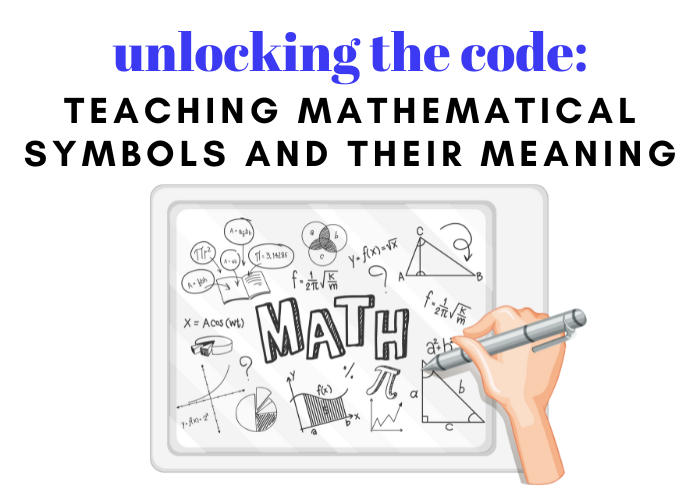

Last Updated on August 31, 2021
No one enjoys homework. It’s usually hard and takes up your student’s (and your) free time in the evenings and sometimes on weekends. And, having to do math homework particularly can be even worse.
Math homework and math worksheets both seem to cause the most angst and dread for many kids. Students come up with many reasons why they should delay homework or not do it all together, and homework can escalate the stress level in your home, leading to arguments and unrest when you have to step in and become the ““
We don’t want that for you and your family.
Math homework may never be enjoyable, but there are things you can do to make it more bearable.
Check out the tips below for getting your student more excited about math homework and worksheets.
When it comes to getting your student more excited about their math homework, the key is to make math itself more enjoyable and even a little fun.
We know that, even when it comes to our own work as adults, we look forward to doing something we enjoy. We focus better, work harder and put more effort into getting it right when we like what we are doing.
Your student is no different. A teacher may have told you that your student “can’t pay attention” when it comes to math, but you know they can spend hours focusing on YouTube videos or something else they enjoy.
There are lots of creative ways to make math homework more fun if you think outside the box a bit – the key is finding the method that works best for your student. We’ve put together a few ideas for you to try below.
One way to get your student excited about math homework is to turn completing math worksheets into a game. You can offer them treats or small prizes as incentives for completing homework. Immediate prizes may work better for younger students, while you may be able to turn math homework into a full-on contest for your older students. These contests can lead to certain prizes or privileges for your older students when math homework is completed on time or a certain amount of homework is completed.
One way to do this is to set a point system for homework completed. When your student “wins” a certain amount of points due to completing homework without complaining or completing a certain amount of extra math worksheets online, they receive a prize. This may be a favorite toy or new gadget, a gift card, an outing to a favorite place, or time out with friends. You know what will appeal most to your child. Choose something that your student really wants to encourage them to work hard to earn the prize.
If you don’t like the idea of prizes, you can turn other types of games into math games for added fun. You can use dice to practice multiplication and fractions or have your student create their own math problems with the roll of the dice. There’s also math bingo where students solve a math problem to know what number to mark off the sheet.
You can also use board games this way, asking students math questions based on the number they roll. The card game Uno can be another option by using the numbers on the cards for addition, subtraction, multiplication, and division practice.
If you don’t want to turn math homework into a game yourself – or don’t have time – using an online math tutoring app can be a way to get instant gamification through the use of your student’s digital device. Many tutoring apps have built-in levels that mimic games that your students are already playing. Some of these have a reward and point system built into them, giving your child prizes for completing tasks. Students can also use these to see their progress for even more motivation and encouragement.
Given the popularity of technology today, even with young students, it is likely that your student is already comfortable using and communicating through technology. And, many students prefer using devices for a lot of their activities, including learning.
You may find that your student gets bored easily in the classroom and may not learn using those traditional methods. If so, using an online program or app can be just the thing to get them to enjoy their math homework.
The plethora of math worksheets, a corresponding answer key, video tutorials, games, and more on the internet can take the math help your student receives to the next level.
There are many resources available too! Check out Thinkster free, – where we organize worksheets by topics and . You can then find the corresponding for the your child needs to practice.
(Our curriculum is also aligned to , making it easy to find the corresponding topic when you supplement your child’s homework or school work.)
If your student is a visual learner, a video explanation can be just what they need to help them understand a tough math problem instead of using their textbook.
There are also free math games online that your student can play for even more online practice. You’ll want to do some research on these to make sure they are using a math skill correctly and don’t have additional costs built in that you aren’t prepared for. But these types of games can be another excellent way to tie in technology with learning.
If your child is sick of math homework and math problems and the basic content that they cover, you can get creative by using your child’s interests to come up with your own math problems for them to solve.
If you have a sports star on your hands, you can take what’s in and turn it into a sports analogy.
For example, if the problem calls for adding or subtracting apples, turn it into splitting up basketballs or soccer balls or pom-poms instead. You could use the statistics from a baseball or football game to come up with unique math problems to reinforce concepts for older students.
If your student is interested in cooking or food, you can use recipes to teach them math skills. Helping you cook can teach them measurements and fractions or how to multiply and divide for different serving sizes. You could use a basic kitchen or household item for adding and subtracting as well.
A fun idea to teach your child about money is to set up a lemonade stand. Have your student buy the supplies from a budget and teach them to add amounts together and make changes through the purchase process. They can keep their profits as a reward or donate the proceeds to charity.
This goes along with finding math problems that work with your child’s interests, but if your child is old enough, you may be able to explain common ways that you use math in your own daily life. This can help them see how important it is for them to learn math for school and beyond.
At the grocery store, show them how you have to use basic math concepts to compare the costs of different items and sizes or add up items to stay within your budget. You can show them how you use math skills to set a budget, tally the tip on a meal out, and so on.
You may find that when your student realizes that you have “homework” to do too, that they don’t fight it so much. Use a space with enough room where you can work side by side with your student. You’re there to help if needed, but you can also work on answering emails, check social media sites like Facebook or Twitter, edit that slideshow, or whatever else you might need to do for your own work.
This can be a great example for your student that extra work is often very necessary and important to success, and they won’t feel like they’re the only one in the house who is working and not having fun. This can help make homework feel less like a punishment for them.
If you have space in your house, it can be helpful to have an area that’s only used for homework. This can help your student get in the frame of mind that they’re there to do homework when they’re in that specific room and not anything else. This is a tip often given to adults to help them go to sleep easier, and it can work for other scenarios as well.
Use colors and decorations your student likes to encourage a creative and comfortable environment for them to learn. You may also consider having special supplies that are only for homework. That pencil or pen or folder with their favorite character on it can be appealing and help them get in the homework mindset.
If you live in an area with nice weather, try taking homework time outside. If your student loves the outdoors, this may be the perfect setting to help them focus on their homework without feeling deprived by being indoors while they are working.
When your student is working hard on their math homework, it can be helpful to build breaks into your time. It may be hard for your student to sit there and work straight through for long periods of time, so taking frequent breaks can help.
This concept is backed by neuroscience research that can help you maintain focus, work harder and learn better. Even a couple of minutes can do wonders to reset the brain and get your student back on track.
You can even use the break time as another type of reward for the completion of math homework. Let them text a friend, check social media, watch one video on YouTube, or plan something active to get their blood flowing for a few minutes. Take a quick walk down the street or throw the ball for a few minutes – whatever will have the most appeal to your student. Having fun breaks planned can give them something to look forward to throughout homework time.
These are some basic tips to get you started on the road to making math homework more bearable for both you and your student. If you have one to add that works for your student, please leave it in the comments below.
The Thinkster online math tutoring program offers many of the benefits mentioned above to make math help more enjoyable for your student. It includes homework help, test prep, unlimited math worksheets, and video tutorials. Your child can also have private one-on-one tutoring sessions with a dedicated and elite math tutor.
Thinkster allows your student to use technology and motivates students through gamification and prizes. The unlimited worksheets are centered on many topics and include video tutorials to help your child get on-demand access to learning resources. Your child can also complete math worksheets at any time of day. This makes it convenient to work Thinkster into their schedule. Plus, it’s fun!
We invite you to give it a try for 7-days to see for yourself.


